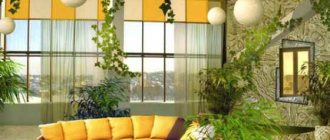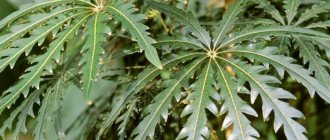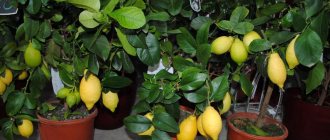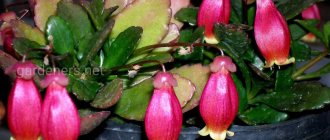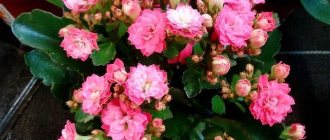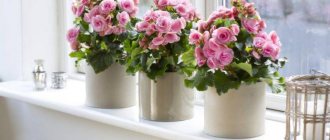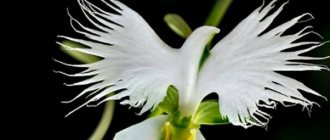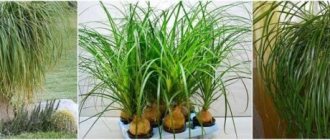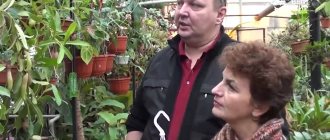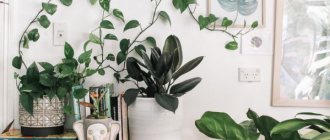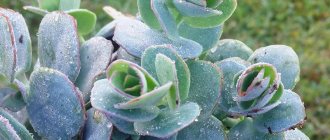Indoor coniferous plants look very elegant, perfectly decorate the interior, purify the air in the apartment, and in winter they can act as a Christmas tree. Let's see which coniferous trees can be successfully grown at home.
Coniferous plants are mostly inhabitants of temperate and subtropical zones, so for many of them the climate of our gardens is more suitable than the climate of residential premises. But still, some species feel good in a room or winter garden.
Kinds
Houseplants belonging to this group have many varieties. As a rule, they are most often grown in gardens and park areas. The thing is that the homeland of these evergreen trees and shrubs is a subtropical and temperate climate. It would seem that the dry air of our premises is not the most favorable microclimate for them.
In fact, this is the case, but who said that you cannot create optimal growing conditions for these plants yourself? In addition, you can choose from this whole variety of conifers truly unique and very beautiful specimens:
- araucaria. If we talk about a full-fledged tree growing in natural conditions, it can reach a height of up to 60 m. Indoor plants, of course, are quite miniature, but even indoors you can independently grow a stunning indoor tree with tetrahedral, soft-touch needles. It is advisable to place the araucaria away from a window where bright light comes from, since the plant does not like direct rays. Choose a dimly lit corridor;
- cypress. This bright green coniferous shrub is the highlight of any plant island. It grows to an impressive size, as for a house plant. Cypress needles are distinguished by the presence of a golden hue. A notable feature of this shrub is the fact that changes in growing and maintenance conditions do not have a very beneficial effect on the plant. Even if you move a flowerpot with cypress to another place or simply move or unfold the flowerpot, this conifer may react painfully to such measures;
- cryptomeria. A coniferous tree of amazing beauty that can reach a height of up to 2 m. The shape of the crown can be formed independently, in general it looks quite neat, and branches with rich green needles hang from it. Over time it becomes yellowish. Another key characteristic is the presence of small cones that do not fall off the tree for a long time, decorating it. As for care, there are no particularly complicated rules, but you must know the key steps for caring for cryptomeria if you want your plant to successfully take root indoors;
- deodar. This plant is also not included in the group of the most fastidious evergreen conifers. Nevertheless, it is also undesirable to forget about it for a long time. For example, experts very often recommend alternating temperature conditions in winter, that is, moving a flowerpot from a warm place to a cool one. An indoor tree should spend most of its time in a cool, shaded room that receives diffused light;
- juniper. Another popular coniferous tree, which can often be found in private flower collections. The plant loves sunlight, but not direct rays, and also reacts negatively to sudden changes in temperature;
- thuja (western or folded). In fact, there are quite a few varieties of thuja, but these two are considered frequent guests in the home flower garden. These types differ in the shape of the crown, the richness of the shade of the needles, as well as its softness. If you consider yourself a connoisseur of exquisite indoor plants, you should consider finally getting a thuja.
There are many attractive representatives of evergreen conifers. The main thing is to decide on the specimen you like and carefully study the basic recommendations for caring for it.
Pine
Gardeners often choose pine trees for their unpretentiousness to climate and soil.
Pine seedlings
Pine seedlings in the nursery
Pines in the landscape design of the fourth and fifth climatic zones, which corresponds to the most populated territory of the middle zone and north-west, are used as follows: Scots pine, Scots pine “Norske Type”;
Surprising as it may seem, some varieties of very winter-hardy Scots pine growing in the Arctic Circle are not winter-hardy enough in St. Petersburg, including the “Votereri” variety.
- Mountain pine and its many forms and varieties (Pumilio, Mugus, Winter Gold, Pug and others);
- Rumelian pine (Balkan) with very long needles and large cones;
- European and Siberian pine;
- Korean pine, with very large edible nuts;
- dwarf pine (dwarf pine), reminiscent of mountain pine, but with edible pine nuts and bluer needles.
- The once popular Weymouth pines are highly susceptible to attack by rust fungi and are almost out of use.
Pine bonsai against the background of a coniferous hedge
Tips for caring for indoor conifers
Different indoor coniferous plants in pots require certain care, but there are general recommendations on how to look after your green pets:
- For trees to feel good, they need moist air. Therefore, in summer they are sprayed every day, and in winter - less often. From time to time the needles are moistened;
- 6-10 degrees Celsius is the optimal temperature for “green residents”. Therefore, it is difficult to create such conditions for them in an apartment;
- These representatives of the flora do not require good lighting;
- Conifers will not be suitable for soil for flowers or seedlings, but nutritious and light soil will be in great demand by them. Its composition should include several parts - coarse sand, soil based on pine needles (or heather), and leaf. Making such a mixture will not be easy, so it is better to buy a ready-made special substrate;
- The trees are sensitive to wet soil, so they are watered daily in the summer season. In winter, watering is not carried out every day, but drying out of the soil layer is unacceptable, and also try to avoid excess water.
Thuja occidentalis
These trees, originally from the west coast of the United States, have long been naturalized in Europe, easily adapt to different conditions, and are not afraid of frost and city air. Easy care and a wide variety of crown shapes make them desirable guests in summer cottages.
Thuja occidentalis on the site
Plants easily fit into different compositions. Thuja makes dense hedges.
Yew hedge. Sissinghurst, UK
Hedges are great for defining green rooms in an area. This hedge of thuja occidentalis 'Brabant' separates the economic area with a vegetable garden from the residential part of the site
Substrate selection
The composition of the soil for growing coniferous plants at home depends on several factors: temperature, air humidity, light and your own watering style.
A lot depends on experience here - undoubtedly, after several years of practice, you will be able to select the final composition of the soil mixture that is ideal for your conditions.
The basic composition for conifers includes turf soil, leaf soil, peat soil and sand in a ratio of 1:2:1:1. You can supplement this mixture with 0.5 parts of coniferous soil.
It’s even easier to purchase a special “name” substrate that will suit your plant specifically. You can purchase it at any specialized store.
Preparing for landing
The desire to quickly plant a nice specimen of pine in a ceremonial place in the garden is natural and easy to achieve: I dug a small hole and planted it. Pines only need a sunny place, and they are undemanding about soil conditions and grow well on loam, black soil and sandy loam soils. The general planting rules are set out in the “Gardener’s Cheat Sheet,” but what to do with a seedling when a planting site has not been chosen or the site has very heavy clay soil? I don't have problems with free space, but I do have difficulty deciding on placement in compositions. To give myself time to think and not torment the plant with transplants, I practice planting “newbies” in a temporary place in “mesh pits”. This idea is borrowed from the experience of nurseries that specialize in growing large plants. I choose a place for the “school” in an area that is well lit throughout the day, close to the path, so that it is more convenient to control the condition of the seedling. I dig a hole twice the size of the container. The shape of the pit is a truncated cone with flat walls. I line the cavity of the planting pit with a strong plastic mesh with a mesh size of 1.5–3 cm; it is important to avoid wrinkles on the mesh and carefully straighten it. Then I cover the mesh with a mixture of garden soil and sand (2:1) in a layer of about 10 cm and water it with a hose. Separately, I prepare a substrate for backfilling from my loose garden soil and sand (5:1) with the addition of a glass of wood ash. Before planting, I soak the seedling in a root formation stimulator, and then carefully use a large screwdriver to straighten the roots along the periphery of the root ball. I plant the plant so that the root collar is 3–5 cm above ground level. The edges of the mesh can either be left on the surface, or covered with earth by first inserting beacon sticks along the diameter. When planting, it is necessary to water in several stages using a watering can with a diffuser, since soil compaction prevents the development of roots. I mulch the plants in the “school” with a mixture of compost, sand and pine litter. This composition is suitable for fairly frequent loosening after watering. When planting in hot weather or in mid-autumn, I install a “wigwam” or “yurt” made of sticks or arches, and use covering material with a density of 17–30 g per square meter. I water the plants in the “shkolka” approximately once every ten days from a watering can, combined with treatment with root formation stimulants (twice a month). In general, it is better to water pine trees rarely, but abundantly, and morning sprinkling is a very useful procedure, which you should try to do more often during the “dusty” summer period. While the mountain pine is taking root in the “school,” it is advisable to decide on a permanent location and prepare a planting hole so that the soil in it settles. The optimal time for transplantation is early September, when cool weather sets in. The operation of relocating a pine tree to permanent residence should be carried out quickly to avoid drying out the young roots. When replanting, the mesh will avoid damage to the roots and prevent the root ball from crumbling. If it is not possible to separate the mesh, it can be cut in several places. When planting, it will not be superfluous to take into account the location of the pine tree relative to the cardinal directions; you can tie a “bow” on the south side in advance and plant it as the plant is “used to”. If you miss this moment, the pine may burn. There is no need to stand on ceremony with the purchased seedlings; they have been sufficiently “hardened” on the trading floors.
Watering frequency
In the summer, especially if it is very hot, conifers need generous watering. Water with settled water at room temperature (or even cooler if we are talking about plants at rest). At the same time, you need to monitor the condition of the earthen clod; you must not allow it to become waterlogged or dry out - both are detrimental to plants of this class. In the fall, watering is reduced little by little, as they say “drop by drop,” to moderate. During the period when the air temperature outside the window has already dropped and the room is not yet heated, coniferous trees need to be watered especially carefully, especially in rainy weather. The fact is that the dampness of an unheated room itself leads to slower drying of the soil. Precipitation increases air humidity, and thereby “slows down” the drying process even more, so there is a risk of simply flooding the plant.
In winter, you need to moisturize moderately, but there are some nuances here. On the one hand, due to the operation of central heating, the air humidity in the room decreases, and this leads to rapid evaporation of water. But on the other hand, when the pot is on the windowsill, the soil in it is often cold, especially if there are cracks in the window frames and a stream of cold air blows directly onto the pot. In such soil, moisture is much less absorbed by the roots. Therefore, if there are cracks, you need to carefully seal them so that you prevent excessive cooling of the pot.
In spring, watering should be increased again. Throughout the year, it is very important to regularly spray the crown with settled water heated to a temperature of +25°C. It is good to carry out this procedure 2 times a day, morning and evening.
Content
- 1. Caring for coniferous plants
- 2. Substrate selection
- 3. Watering frequency
- 4. Transplantation and feeding
- 5. Wintering
- 6. A few final tips
A small coniferous tree can transform even the most uncomfortable home, filling it with the unique smell of forest and pine needles.
But, unfortunately, not all representatives of this class can exist in indoor conditions. The difficulty mainly lies in the fact that for wintering they require low temperatures and a round-the-clock supply of fresh air throughout the year. Only a few plants (for example, Cypress, Cryptomeria, Araucaria, Podocarpus, Thuja, Himalayan Cedar) grow well indoors, mainly on window sills and loggias.
Buying a coniferous seedling is perhaps the most important task, on the results of which the further success of the “operation” depends. The fact is that coniferous plants can retain their original appearance for about a month after their “death”. Of course, it will not be difficult for a specialist to determine the condition of a plant even by a slight change in the color of the needles, but what to do if you are just beginning to comprehend all the intricacies of plant growing?
To prevent buying a seedling from turning into a game of “lucky or unlucky,” you need to know how to distinguish a healthy plant from a sick one or, worse, a dead one. You can do this in two ways:
- Touch the plant - if the branches break easily, and the needles fall off even with a light touch, then the plant is dead.
- Look at the root system (which, unfortunately, is not always possible) - a healthy plant has white or slightly yellowish root tips, but always succulent.
Pay attention to the condition of the soil - if it is dry, refrain from buying a seedling, since complete drying out of the earthen lump entails irreversible consequences for the coniferous plant. While a deciduous plant can still be “reanimated” by watering, a coniferous plant is unlikely to withstand such a test.
IN THE PHOTO: In a healthy plant, the needles are intensely colored and do not fall off when touched
After you bring the seedling home, do not remove the store-bought substrate and do not transfer the plant from pot to pot - it is better not to disturb coniferous plants at all unless clearly necessary. Otherwise, they develop poorly, begin to wither and eventually die.
How to care for coniferous plants in winter
- A green pet feels most comfortable on a cold window on the north-eastern or northern side, on a glassed-in veranda or loggia. The temperature level should not be below zero, and freezing of the soil must not be allowed;
- These representatives of the flora are very resistant to low temperatures, but in a small pot you need to avoid freezing the roots, because they can die immediately;
- In winter, trees are in a calm state, so they do not require fertilizing with growth stimulants. They begin to be held from the beginning of March. In the summer, you can take the “green resident” with you to the dacha and plant it directly in a pot in open ground in a shaded corner so that the tree grows in cool soil, which will allow it to “steam” in the hot air;
- Cover the substrate with a cloth to prevent earthworms and insects from getting into the pot. At the beginning of September, it is dug up, washed and transferred to the apartment.
Spruce
This tree, typical of the middle zone, also does not require serious care. In landscape design, common spruce, Serbian spruce, and prickly spruce, which has a green and blue shape, and many decorative varieties are used. For large compositions, tall trees are used.
The blue spruce on the site is not necessarily the blue form of the prickly spruce. In Serbian spruce, due to the color of the underside of the needles, the overall color is also slightly blue.
Spruce on the site. Simple topiary made from Norway spruce
Other spruces are also used:
- Dwarf variety of Serbian spruce “Nana”;
- A spherical variety of prickly spruce with blue needles “Glauca globoza”;
- A narrow-clone variety of common spruce with weeping branches “Inverse”.
Replanting a coniferous plant
- From a small shipping container, a store-bought tree is transplanted into a ceramic, plastic or clay pot with a diameter of no more than 10-15 cm, with drainage holes;
- These trees are difficult to tolerate “relocation”, so it is done once every 2-3 years. Replanting indoor coniferous plants is carried out in such a way that the earthen ball is not disturbed and the roots are not damaged;
- Expanded clay drainage is placed in the pot, activated charcoal or charcoal is added for disinfection purposes, and a little substrate is added. The “green friend” is carefully removed from the container along with the soil, preventing the loose soil from falling off. The earthen lump is held with one hand, the new substrate is poured with the other hand;
- The specimen is planted at the same depth as before.
Coniferous plants for an apartment are very beautiful and aesthetically attractive. Thanks to them, there will always be fresh air in your home. Despite the fact that plants require careful care, your efforts will be well worth it.
Wintering
Winter is a real test for domestic pines, spruces, thujas, cypresses and other conifers. It is improper maintenance in winter that is the main, and often the only, reason for their death. The most difficult thing is to ensure the desired temperature - in winter it should be in the range of +6–12°C, which is difficult to achieve in room conditions.
The most problems with wintering coniferous plants arise for those who do not have a balcony or loggia. It’s good if the window blocks are of an old design and there is enough space between the frames to place a plant there.
If the coniferous plant is simply kept on the windowsill, it must be insulated as much as possible from heat (for example, using a light frame covered with polyethylene, or an ordinary cardboard box). But if we take into account that there is usually a central heating radiator under the window sill, and the heating here is - let's face it - good, such conditions cannot, alas, be called acceptable for coniferous plants.
But the presence of a well-insulated loggia greatly simplifies this task. The only drawback is difficult ventilation, so you need to think in advance about ways to get fresh air (for example, a small window).
To maintain the required temperature in the loggia, you can use an electric heater connected to a temperature sensor (in this case, when the temperature drops, the heater will automatically turn on, and when the air temperature warms up to +10°C, it will turn off).
You can try to heat the loggia not with electrical appliances, but by pumping warm air from the room. In this case, it will be necessary to make special holes through which, in fact, air flows will flow. The operation of the blower fan can also be controlled using a temperature sensor located on the loggia. If the plant pot is on the floor, the soil may freeze. To heat it, it is good to use a radiant infrared heater.
In case of severe frosts, when it is impossible to maintain the required temperature on the loggia, the pot with the plant is transferred indoors to the coolest place. After a few weeks, the plant will awaken and begin to grow - then it will need additional lighting (how to organize it is described in detail in the article “Basics of proper lighting for indoor plants”).
Alpine slide
The Alpine slide is created according to the same principle - creating an imitation of the wild nature of the Alpine belt. Keeping the previous principle in mind, you can combine coniferous compositions in landscape design with other plants and stones. It is important not to fall into typical mistakes described in English literature of the 19th century, and not inadvertently make a “dog’s grave” or “raisin bun”.
Miniature alpine slide - rock garden in a stone trough (miniature rolling pin)
Try choosing a cascading structure to add a special charm to the area. It is important to arrange the parts so that large elements do not block smaller ones.
Errors during cultivation
Growing coniferous indoor plants is a labor-intensive task, but if proper conditions are created, they will delight you with their beauty and magnificent coniferous aroma for many years. Here are the most common mistakes when growing indoor coniferous plants:
- lack of regular spraying of the crown, especially in the hot summer;
- non-compliance with a certain temperature regime;
- application of fertilizing in winter;
- using pots of insufficient size;
- excessive movement of a pot of ephedra from place to place.
Juniper
A wide selection of junipers - although there are only a few species suitable for climate zones 4 and 5, they have developed varieties of different sizes and shapes, ranging from trees up to ten meters high, to creeping shrubs with a diameter of several meters, but a height of centimeters.
Juniper. Botanical Garden in Brno
Juniper has gray cones that are used to make gin.
A few final tips
- When choosing a coniferous plant, pay close attention to the condition of the crown and root system, otherwise you risk buying a dead plant.
- To place conifers, choose window sills facing north and northeast.
- Regularly spray the crown and water the plant, but under no circumstances “flood” it - waterlogging, as well as drying out of the soil, has a detrimental effect on representatives of this class.
- If you are replanting a conifer, do it very carefully so as not to damage the root system. It is better not to disturb the old earthen ball, but to use the transshipment method.
- After replanting, shade the plant for 1-2 weeks and provide it with high humidity conditions.
- It is extremely important to properly organize the wintering of conifers - make sure that the air temperature is no higher than +6–12°C.
Sources
- https://MyOrchidea.ru/tsvety/komnatnye-hvojnye-rasteniya/
- https://trudogolikam.ru/flora-i-fauna/xvojnye-komnatnye-rasteniya-luchshie-vidy-i-pravila-uxoda.html
- https://LePlants.ru/tsvetovodstvo/hvoynye-rasteniya-v-dome-missiya-vypolnima/
- https://stroy-podskazka.ru/komnatnye-cvety/hvojnye/
[collapse]
Deodar
This evergreen plant loves bright, indirect sunlight. You can keep it in a warm room in winter for about a week, after which it is necessary to provide cooler conditions (from 0 to 10 ° C). With the onset of spring, before the first frost begins, it is recommended to take the cedar out into the open air, into a sunny corner.
It is necessary to periodically spray and water the plant regularly. Replanting does not have a very good effect on cedar, so immediately choose a spacious tub for it and replant it only when it grows too large for your apartment.
